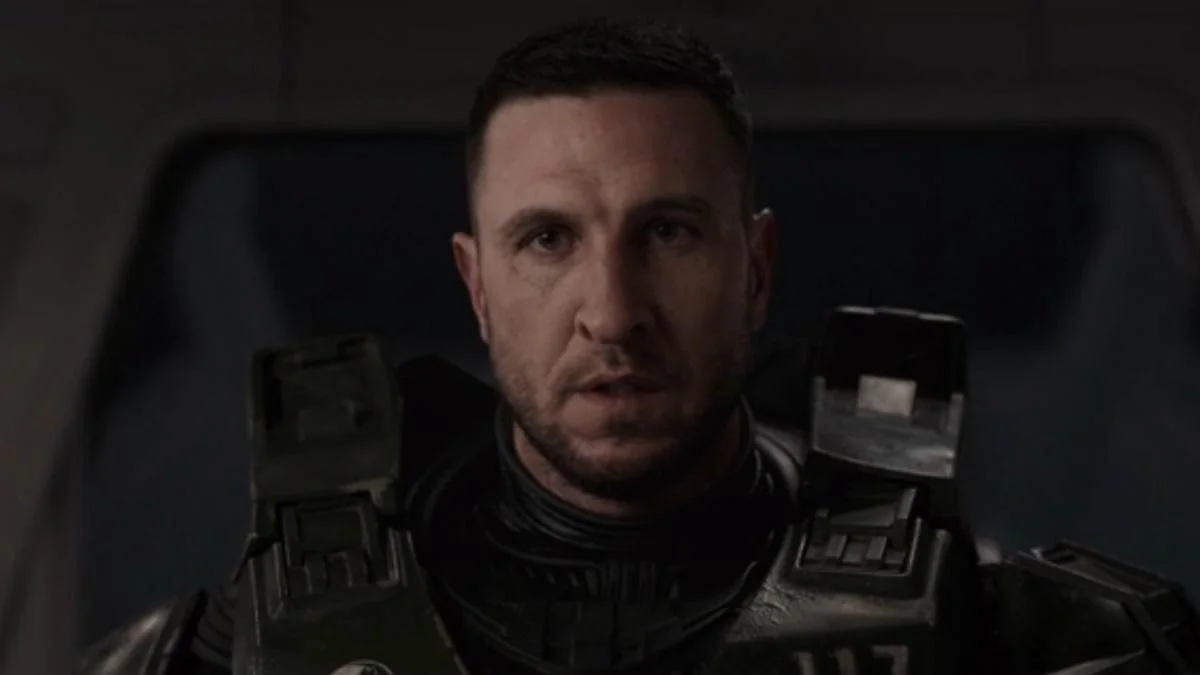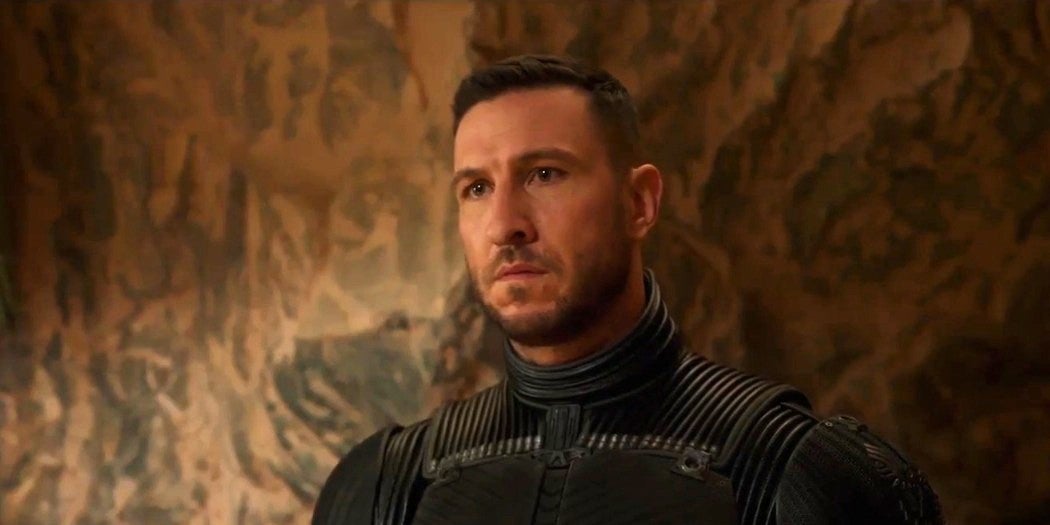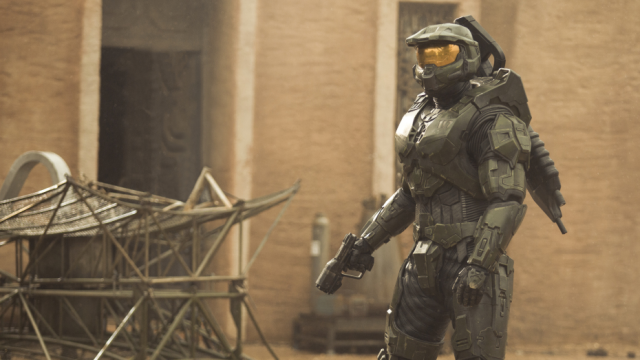We’ve known from the get-go that Halo The Series would split apart from the established lore of the beloved Microsoft gaming franchise to offer its own spin on familiar beats and ideas that have been touched upon in over 20 years of games, tie-in books and comics, and more. But one of its most fascinating differences so far is how it gives us a rather literal look at the humanity of its lead hero.

Much of the runtime of “Contact,” the first episode of the Halo TV series, is about how the Master Chief, played by Pablo Schreiber, is coming to terms with the idea that not only is the UNSC — the organisation he was forged to fight for, no matter the cost — morally suspect, but that he is indeed capable of rebelling against the years of training, motivation, and a non-insignificant amount of mental programming to defy his relationship with it. The climax of episode saw two unprecedented things happen: the first was that Master Chief chose to defy a direct order of the UNSC, after ONI head Admiral Parangosky (Shabana Azmi) ordered him to execute the young Kwan Ha (Yerin Ha), the sole survivor of an Insurrectionist colony outpost slaughtered by the alien Covenant. That’s not anything particularly new to fans of the games or Halo’s larger tie-in fiction; later entries in the series like Halo 5: Guardians have explored the idea of Chief temporarily “going rogue,” and the murky ethical standpoint of the UNSC as the de facto perspective for Halo’s worldbuilding beyond the games has been questioned practically since the very first transmedia Halo fiction.

The second thing was perhaps the most shocking, and definitely controversial to Halo fans: Master Chief proved his willingness to protect Kwan and turn against the UNSC by removing his helmet. Although through necessity in the wider Halo lore there have been moments where Chief — aka John-117 — has been unarmored or unmasked, the games in particular have always feverishly avoided showing his face. Seeing the close-cropped, scarred, rugged-but-earnest visage of Pablo Schreiber staring back at the camera — and then continuing to leave his helmet off — is a surprisingly major moment for the franchise. But it also speaks to an attempt to do something with Master Chief that the Halo games have long struggled to do: make him feel more human than his larger-than-life status as this musclebound, armour-clad single-handed saviour of humanity ever has.
There have been moments in the games to explore this of course, especially in Chief’s relationship with his AI companion Cortana — but from its first-person perspective to its ceaseless desire to always keep the human face behind Master Chief’s green-and-orange-tinted helmeted visage hidden, the Halo games have long effectively made John a shell for players to inhabit, moreso than a deeply-investigated individual character of his own. That’s the point of the games’ power fantasy: you are stepping into Master Chief’s armour, being the hero, rather than necessarily exploring John’s journey. Halo The Series’ immediate decision to strip that layer of armour away from Master Chief and show him in a moment of profound vulnerability by going against that “unspoken rule” of the games is an immediate and effective way to show fans the different, but familiar path the show wants to go down in its exploration of the franchise’s wider story.

It’s fascinatingly handled beyond just the shock of Schreiber’s face being plain for all to see. The few most “gamified” moments of the first episode come in its action sequences in the opening Covenant attack, where Chief and his team of fellow Spartan warriors repel the alien invaders, by briefly throwing us into Master Chief’s perspective. We get to see the HUD inside his helmet, hear the flickers of shields recharging and him hold his assault rifle up to blast an Elite — imagery immediately, recognisably, Halo, because it’s what we see in the games. When John unmasks himself to Kwan in the episode’s climax, the reaction of the UNSC officers monitoring him from their base is shock — because they can no longer see through his visor themselves, no longer directly track what John is doing and what he says and sees. The control of his armour, a tool of the UNSC’s technological and propagandist might, is severed in the singular act of allowing us to see Master Chief as a human being, literally and metaphorically.
The second episode of Halo, “Unbound,” in which John and Kwan meet up with a former Spartan and now fellow rogue, Bokeem Woodbine’s Soren, to discuss why they felt the need to run from the UNSC, explores this newfound interest in the connection between Master Chief’s armour and his vulnerability as a person. It’s now framed, in contrast to Soren’s confidently hardened position against the UNSC, with John’s sheltered naivety having been forced to grow up knowing little but his new life as a weapon of what is now Soren’s enemy. Once again Chief’s helmet becomes an important mask for him, one he lowers when in Kwan’s and Soren’s presence, but one he puts back up when he first enters the latter’s asteroid hideaway, a protection to keep eyes away from Kwan and firmly on him.

As the episode continues and Chief talks to Soren more about the life he’s led after escaping the Spartan program, Chief begins to strip more and more of his armour away beyond just the helmet, up to the point that he’s literally wandering around in just the undersuit, practically naked without the layers of bulky green plating that had turned him into a walking tank. It’s meant to be an unnerving sight to Halo fans to see John in this moment of personal crisis, unsure of where his path lies, and what he believes in. And it matches with the almost alien idea of being asked to examine his physique in such a way — broad, bulky, and muscular, but the shape of a person, and not a Spartan. The iconic imagery of the Halo franchise is pulled away from him, piece by piece, until John is left at his most spiritually and literally exposed.
Alas, it’s not really to last — “Unbound” feels like a bit of a regression on the promise of the first episode, in so much that with little rhyme or reason Master Chief decides to leave Kwan in Soren’s care and return to the fold of the UNSC, his former defiance and disbelief at its moral integrity left untouched by its end. But even then, we still get to glimpse here and there these moments of Master Chief’s humanity — the unfamiliar sight of his face, his body, his literal presence as a person. Wherever Halo goes from here in its exploration and alternate spin on the story of the franchise is arguably going to remain one of its most boldly controversial, and interesting, steps away from what fans expected from the show.
Wondering where our RSS feed went? You can pick the new up one here.
